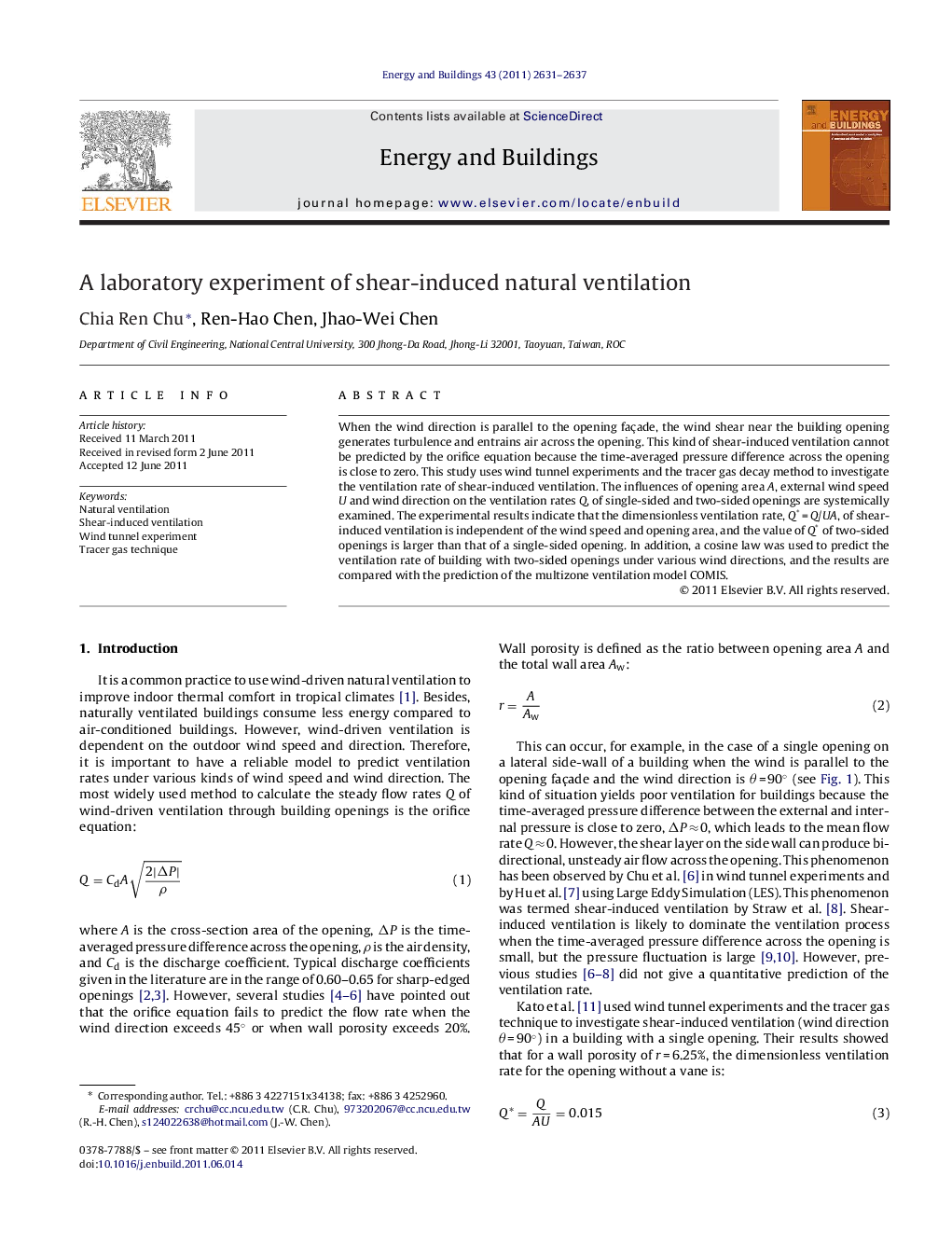| Article ID | Journal | Published Year | Pages | File Type |
|---|---|---|---|---|
| 264071 | Energy and Buildings | 2011 | 7 Pages |
When the wind direction is parallel to the opening façade, the wind shear near the building opening generates turbulence and entrains air across the opening. This kind of shear-induced ventilation cannot be predicted by the orifice equation because the time-averaged pressure difference across the opening is close to zero. This study uses wind tunnel experiments and the tracer gas decay method to investigate the ventilation rate of shear-induced ventilation. The influences of opening area A, external wind speed U and wind direction on the ventilation rates Q, of single-sided and two-sided openings are systemically examined. The experimental results indicate that the dimensionless ventilation rate, Q* = Q/UA, of shear-induced ventilation is independent of the wind speed and opening area, and the value of Q* of two-sided openings is larger than that of a single-sided opening. In addition, a cosine law was used to predict the ventilation rate of building with two-sided openings under various wind directions, and the results are compared with the prediction of the multizone ventilation model COMIS.
► The dimensionless ventilation rates of shear ventilation for single and two-sided openings are independent of the opening area A and external wind speed U. ► The dimensionless ventilation rate of two-sided openings is larger than that of a single opening for shear ventilation. ► A cosine law was used to predict the ventilation rate of building with two-sided openings under various wind directions.
